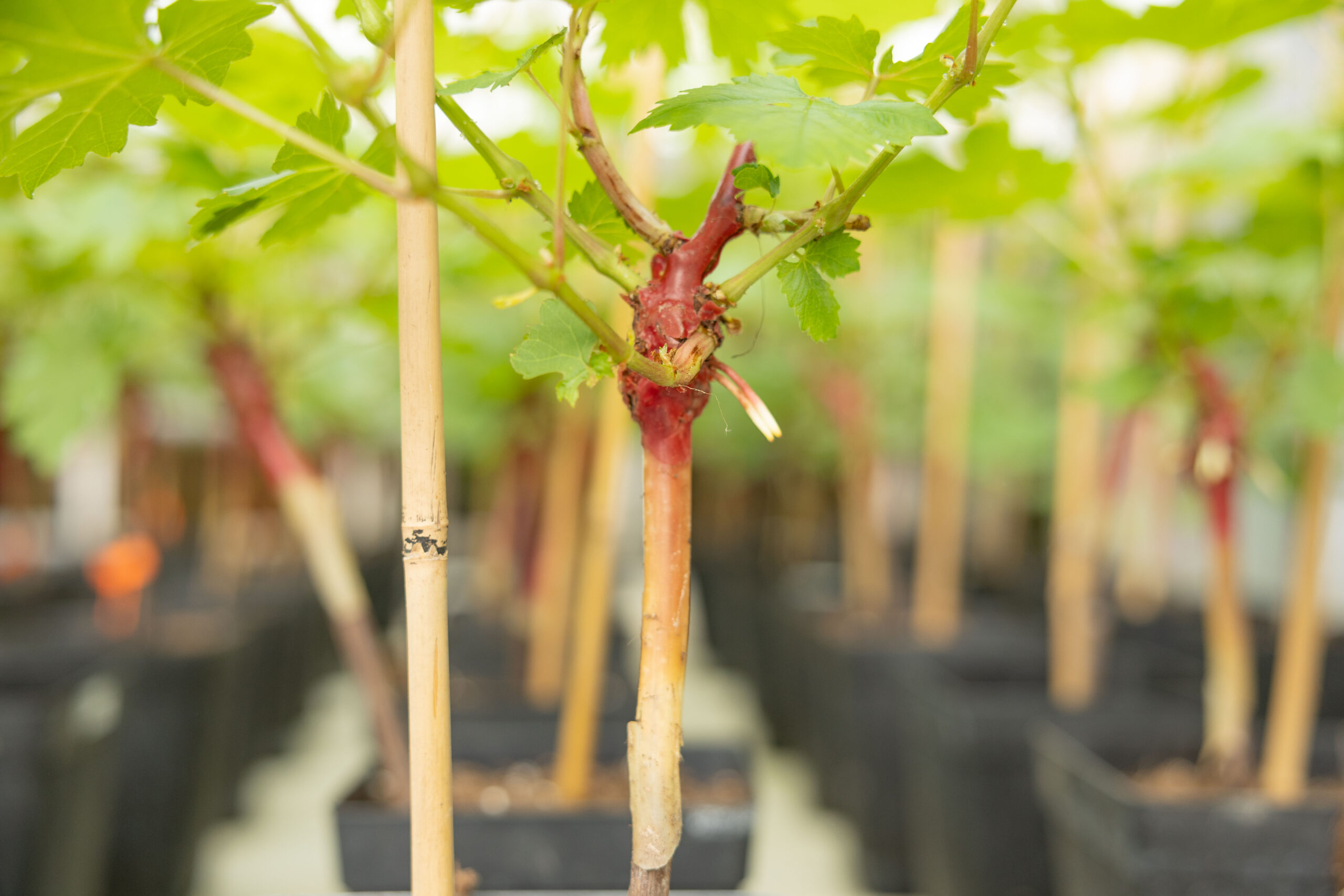The selection of grapevine varieties resistant to powdery and downy mildew has been underway since the early 1980s by several European breeders. The main resistance factors used against downy mildew are the genes Rpv1, Rpv3.1, Rpv3.2, Rpv3.3, Rpv10, and Rpv12 (Rpv: Resistance to Plasmopara viticola). Resistance to powdery mildew is conferred by the genes Ren3, Ren9, and Run1 (Ren: Resistance to Erysiphe necator).
These varieties generally possess monogenic resistance (i.e., a single resistance gene) to downy mildew and exhibit varying levels of resistance to powdery mildew: from none, to monogenic resistance via Ren1, or polygenic resistance combining Ren3/Ren9 (these two genes are genetically linked on the genome).

The selection of grapevine varieties resistant to powdery and downy mildew has been underway since the early 1980s by several European breeders. The main resistance factors used against downy mildew are the genes Rpv1, Rpv3.1, Rpv3.2, Rpv3.3, Rpv10, and Rpv12 (Rpv: Resistance to Plasmopara viticola). Resistance to powdery mildew is conferred by the genes Ren3, Ren9, and Run1 (Ren: Resistance to Erysiphe necator).
These varieties generally possess monogenic resistance (i.e., a single resistance gene) to downy mildew and exhibit varying levels of resistance to powdery mildew: from none, to monogenic resistance via Ren1, or polygenic resistance combining Ren3/Ren9 (these two genes are genetically linked on the genome).

These varieties combine multiple resistance factors to downy mildew and powdery mildew. Gene pyramiding (i.e., stacking multiple resistance genes against a single disease in one variety) is one of the main strategies available to breeders to enhance the durability of resistance.
This stacking comes at the cost of longer breeding efforts. It was initiated in the early 2000s by INRAE and IFV under the ResDur program.
The first four pyramided varieties developed through this program—Artaban, Floreal, Voltis, and Vidoc—have been available and listed in the national catalogue since 2018. These efforts continue today with the development of next-generation resistant varieties combining three resistance factors, and the selection of regionally typical resistant varieties (as part of the Newvine program led by IFV).
| Origin | Variety | Downy mildew resistance gene | Powdery mildew resistance QTL |
|---|---|---|---|
|
France |
Rpv1/Rpv3.1 |
Run1/Ren3/Ren9 |
|
|
Rpv1/Rvp10 |
Run1/Ren3/Ren9 |
||
|
Rpv1/Rpv3.3/Rpv10 |
Run1/Ren3/Ren9 |
||
|
Rpv1 |
Run1 |
||
|
Germany |
Rpv3.2 |
Ren3/Ren9 |
|
|
Rpv3.1 |
Ren3/Ren9 |
||
|
Rpv10 |
Ren3/Ren9 |
||
|
Rpv3.1/Rpv3.3 |
Ren3/Ren9 |
||
|
Rpv3.3/Rpv10 |
Ren3/Ren9 |
||
|
Switzerland |
Rpv3.1 |
Ren3/Ren9 |
|
|
Rpv3.1/Rpv12 |
Ren3/Ren9 |
||
|
Italy |
Fleurtai |
Rpv12 |
Ren3/Ren9 |
|
Rpv3.1/Rpv12 |
Rpv3.1 |
||
|
UD-55.100 B |
Rpv3.1 |
Ren3/Ren9 |
|
|
UD-31.125 N, UD-32078 N |
Rpv12 |
- |